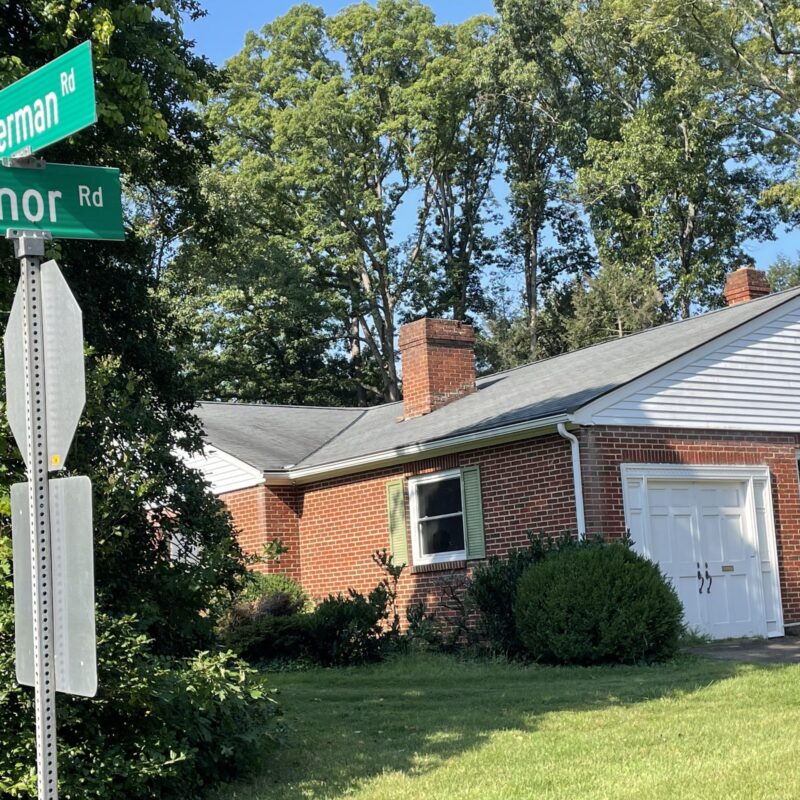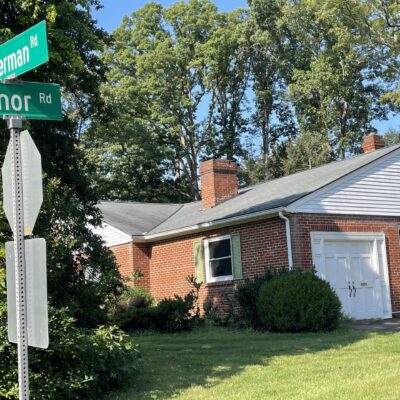By Ken Wilson –
As an underage college kid, Ian Glomski made “crappy” beer in his mother’s house. As an adult he makes whiskey in an alternative school—a former school, that is.
Let’s not get the wrong impression. What Glomski is up to in the former Henry Avenue Learning Center in Charlottesville, and what an increasing number of adventurous entrepreneurs in the city and the surrounding counties are turning to for fun and profit, is the entirely legal, economically stimulating, and increasingly creative distillery business. Bourbon and single malt, vodka and gin, rum and rye, and even amaro and anisette—local distillers are making them all, to the delight of foodies and craft cocktail connoisseurs with palates developed well beyond those of school kids and undergrads.
Glomski’s thirst to make better beer led him to a course in microbiology, and a career in the field lasting over 20 years, before disenchantment with the funding process necessary to that work led him full circle. “Making alcohol in some shape or form had been my life ever since I was 18,” he says. “It brought me back to becoming a distiller.”
His Vitae Spirits distillery fired up its newly installed still on Henry Street for the first time in November 2015. Today it produces gin, orange liqueur, anisette and two kinds of rum, and Glomski’s scientific background, botanical knowledge and zest for local herbs and spices—there are 18 in the gin alone—is reflected not only in the bottles but on them.
“Our labels are supposed to look something like Darwin’s journals as he’s sailing around the world doing sketches,” Glomski says, “and that’s why our actual mark [on the top left of the label] is the ethanol molecule.” Much of what flavors the spirits within—hardy orange, ginger, lemongrass, mint and cilantro, for example—is grown in the area, sometimes in Glomski’s own backyard.
Vitae’s Modern Gin won the silver medal in the prestigious San Francisco World Spirits Competition. Another of its most popular offerings is a collaboration with its next door neighbors, Ace Biscuit and Barbeque. “We get fresh sugarcane and grill it over charcoal,” Glomski says, “so the sugarcane stems get all caramelized and smoky. That’s what we use to flavor our Golden Rum. No one’s tasted anything like it before.” He’s also working with Mudhouse to develop a coffee liquor; a beer-whiskey produced in collaboration with Charlottesville’s Champion Brewery will be released soon.
Over in Afton, Christine Riggleman opened Silverback Distillery (where she makes vodka, gin, rye and bourbon) in August 2014. “I knew I wanted to be a producer when we bought the property,” she says. “I wanted to do something different. It seemed like there were enough breweries around and we wanted to shake things up a little bit.” By “we,” Riggleman means herself and her daughter Lauren: “We’re the only mother-daughter distilling duo in the country.”
Mother and daughter operate two stills, a traditional pot still, and what’s called a continuous column—“She’s 27 feet tall and I can run her 24 hours a day, seven days a week,” Riggleman says. And she runs it responsibly, buying Virginia-grown grain and Nelson County honey, and donating the spent mash leftover after the distilling process to nearby farmers for use as fertilizer and livestock feed. “We’re also the first distillery in the country to use geothermal technology for our distilling process.”
Riggleman is proud of the results. “We have won 14 international awards in three years, and we didn’t enter Billy Bob’s Whisky Contest. We entered the hardest spirits competitions in the world and we have won 14 times; we’re not afraid to play with the big boys.”
Peter Morganer is one of five distillers at Copper Fox Distillery, which opened in Sperryville in January of 2005 and produces single malt, gin, bourbon and rye. “We’re a craft distillery, so we start from scratch with nothing but Virginia products,” Morganer says, “malting the grain and smoking it. We have our own mill, to mill it into flour, and then we do fermentation and distillation on the premises.”
“Our flagship is our single malt whiskey. In Scotland they smoke their barley with peat. We were the very first distillery in the world to smoke barley with fruitwood—we smoke it with apple and cherry wood. When our owner Rick Wasmund was growing up, he loved the smell of different kinds of fruitwood when he would have fires, and he wanted to bring that into his whiskey.”
Over at Ragged Branch in southern Albemarle County, Alex Toomy and his two distillery partners “do it old school,” even growing their own corn, rye and wheat. Toomy was “looking for something different than development and building as a retirement plan. This seemed like a fun thing to do.”
Watching the History Channel one night, he saw a Modern Marvels episode about American whiskey. The next day he cold-called David Pickerrell, mash distiller and vice-president of Maker’s Mark. “He was real enthusiastic about helping us,” Toomy recalls.
“That was in 2009. We put our first barrel up July 14, 2010.” Ragged Branch currently sells a wheat-based and a rye-based bourbon, along with Bourbon Beef, mash-fed Black Angus available in a variety of cuts. A cask strength, 121-proof, “Cowboy Cut” bourbon and a rye are on their way.
Ivar Aass moved here from New York City in 2012, having lived in Norway, Indonesia and France. “Scotch, whiskey and spirits are life-long passions for me,” Aass says,” and I’d always wanted to learn how to make them, so I started tinkering around in my NYC apartment with a tiny stovetop still to see what I could do. I was instantly hooked. Even back then, I was sharing what I’d made with friends in blind tastings, and they were impressed, so I knew I was onto something.”
Aass’s Spirit Lab Distilling in Charlottesville released its tiny first batch of single malt—100 percent barley malt fermented using a wild yeast strain Aass started seven years ago in his kitchen—in December, 2016. The next batch of 100 or so bottles should be out any day now. For his amaro, a potent digestif of Italian origin, Aass and his wife forage wild pawpaws, autumn olive blossoms, perilla, and pecans. “It’s amazing what grows in this part of the country, and how healthy and bountiful the local flora is.”
Local grains and local flavoring agents are foundational to the Virginia distillery biz. But so is local spirit. “We get two to four sets of people a week coming through wanting to open a distillery,” Riggleman says. “We try to give them tips and advice. We help each other out quite a bit.”
“We certainly use physical things from around this area to give us a personality, but it’s not just your ingredients,” Glomski agrees, “it’s the network and the ideas. We’re in a unique location that builds these relationships with all the people around us. That space is defining our local influence also.“





